Perched dramatically on a rocky outcrop at Sorne Point, Dùn Ara overlooks the vast expanse of the Atlantic. From here, you can see the islands of Coll and Ardnamurchan. This isn’t just any ruin; it’s a site steeped in millennia of history. Officially, it’s both a ruined medieval castle and an ancient dùn (fort). Ultimately, its very existence tells a continuous human story on the Isle of Mull. It’s a tale of strategic importance, clan power, and enduring mysteries.
For centuries, Dùn Ara was a formidable stronghold. Its stone walls bore silent witness to the turbulent history of the Scottish Highlands and Islands. The site was a nexus of defense, community, and maritime control, dating from its earliest, pre-medieval origins to its final abandonment in 1642. Today, Dùn Ara stands as a Scheduled Monument, a protected testament to Scotland’s rich heritage. Still, much of its story remains unwritten, awaiting the archaeologist’s spade.
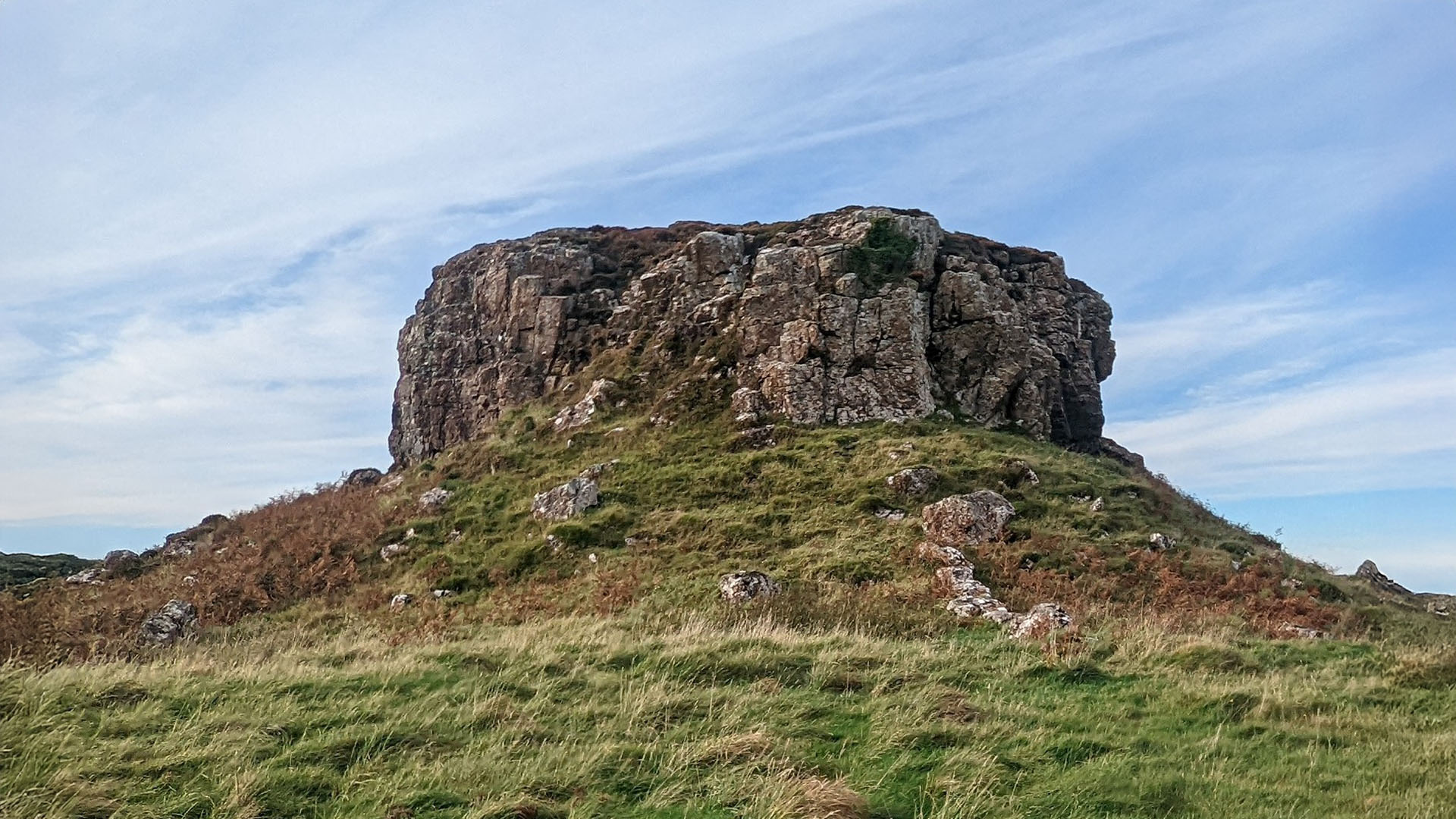
A Glimpse into the Past: The Ancient Dùn
The story of Dùn Ara starts long before the medieval period. Archaeological observations suggest the medieval castle was built on the foundations of an even older dùn or fort. As a result, some of the lower courses of masonry may pre-date the castle, hinting at an Iron Age or Early Medieval period of initial fortification. This makes Dùn Ara a fascinating palimpsest, a site where layers of human activity have accumulated over thousands of years.
The Isle of Mull itself has a rich archaeological tapestry, with evidence of human habitation stretching back to the Mesolithic period, roughly 11,000 years ago. Various Iron Age structures dot the island, including impressive brochs like Dun Nan Gall and An Sean Chaisteal, as well as standing stones and crannogs. Dùn Ara, therefore, fits into a long tradition of defensive architecture in the Hebrides. Ultimately, successive populations repeatedly re-fortified strategic locations. Understanding this evolution from an early dùn to a later medieval castle offers valuable insights into the region’s changing defensive strategies and societal structures.
A Norse Mystery: The Harbour and Its Secrets
One of the most intriguing aspects of Dùn Ara’s early history is the evidence of a Norse presence. This evidence is compelling, though circumstantial. The castle’s location was chosen for its defensive height, but also because it protected a natural harbour or boat landing. An artificially constructed harbour complex lies on the south-west side of the castle. It includes a small jetty, a quay, and boat-noosts (traditional stone shelters for boats).
The “Bathing Pool” is a particularly noteworthy man-made harbour. Consequently, some theories suggest its construction happened before the castle’s occupation. The Norse may have used it during their extensive presence in the region. James Petre’s 2020 article, “Dun Ara: a Norse-period ‘harbour’ in Mull?”, explores this hypothesis. He examined the site’s archaeology and fragmented history, focusing on its maritime features.
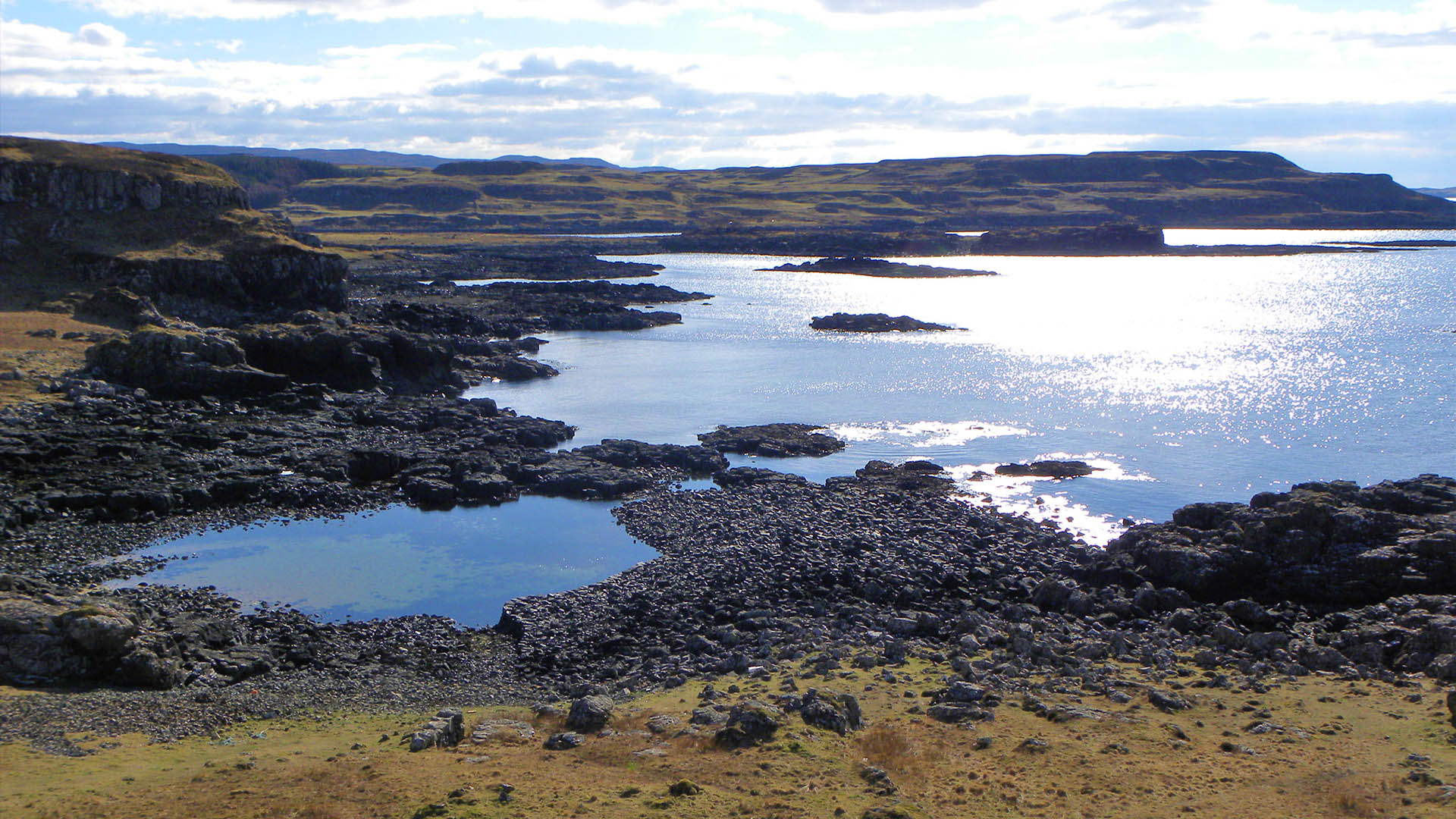
Comparative Analysis and The Need for Research
Petre’s work highlights the increasing evidence for Norse activity in the Inner Hebrides and Mull. However, direct, conclusive proof of Norse occupation at Dùn Ara remains elusive. Still, the absence of evidence does not entirely negate the possibility. After all, Mull was part of the Norse Kingdom of the Isles (Suðreyjar) from the 9th century to the mid-13th century. During that time, Viking invasions reshaped the region’s political landscape.
A comparative analysis with other sites also strengthens the plausibility of a Norse connection. One example is the Loch na h-Airde harbour complex on Skye. This site is a rare medieval harbour with potential Norse links. Historical records explicitly note its adjacency to Dun Ara Castle. At Loch na h-Airde, researchers found 12th-century wooden boat fragments from a clinker-built vessel. This provides tangible evidence of early historic maritime activity in the region. However, Dùn Ara lacks this kind of direct archaeological finding. Unlike sites like the 10th-century boat burial at Swordle Bay in Ardnamurchan, where they uncovered definitive material evidence of Norse presence, Dùn Ara’s Norse period remains largely speculative. This underscores the need for targeted archaeological investigation to confirm these theories and fully illuminate Dùn Ara’s earliest maritime role.
Clan MacKinnon’s Stronghold: Centuries of Power and Conflict
From the 14th century onward, Dùn Ara was synonymous with Clan MacKinnon. It served as their principal stronghold until its abandonment in 1642. The MacKinnons, a prominent Highland Scottish clan, trace their lineage back to the royal family of Kenneth MacAlpin, the first King of Scots. Their clan slogan, “Cuimhnich bàs Alpein” (“Remember the death of Alpin”), reflects this ancient heritage.
The earliest verifiable record of the clan’s connection to Mull dates to a 1354 indenture. In this document, the Lord of Lorn stipulated that Clan Finnon should not be entrusted with the castle of Cairn na Burgh. This confirms the MacKinnons’ established presence on the island. In that same year, 1354, the MacKinnons significantly strengthened Dùn Ara Castle to secure their territorial claims on Mull. This solidified its role as their primary seat.
MacKinnon Power and Influence
The MacKinnons held extensive lands across Mishnish, the northernmost tip of Mull where Dùn Ara is located, and Strathardle on Skye. They acquired the Mishnish lands sometime after 1437. They exchanged them for older MacKinnon territories in Gribun. Beyond their military and territorial roles, the MacKinnons held hereditary positions within the powerful Lordship of the Isles. This included the custodianship of weights and measures. People referred to them as ‘Ancient Thanes,’ ‘Marshal of the Armies,’ and ‘Master of the House.’ Also, the architectural similarity between Dùn Ara’s Great Hall and the Lordship of the Isles’ Great Hall at Finlaggan on Islay suggests a shared cultural and political template for important clan centers within the Lordship’s sphere of influence.
A Timeline of Power
Dùn Ara was not merely a static fortress; it was a living center of clan life. It was deeply intertwined with the political machinations and feuds of the era. Historical records paint a vivid picture of the MacKinnons’ involvement in regional power struggles. Here are some key events:
- 1303: A significant meeting took place at Dùn Ara. Angus Og MacDonald, Lord of the Isles, and Gillemoir MacLean, chief of South Mull, met with Gillebride, chief of the ancient MacKinnon Clan. They were masters of the North of Mull. Their purpose was to resolve a dispute over the MacKinnon claim and potential threat to the nearby Isle of Gometra. The MacQuarrie Clan, allied to the powerful Clan MacLean, had long held it. Ultimately, the authority of the Lord of the Isles was sufficient to resolve the dispute to everyone’s satisfaction.
- 1354: The MacKinnons’ stronghold, Dùn Ara Castle, was further strengthened to protect their lands on Mull.
- 1587: During a brokered settlement in the long-standing feud between the MacLeans and MacDonalds, Lachlan MacKinnon and his brother Neil of Dùn Ara were among eight hostages surrendered to secure a temporary peace. Consequently, this highlights the high stakes and personal risks involved in clan politics.
- 1600: Lachlan MacKinnon succeeded his father as Chief. His seat was Dùn Ara Castle.
- 1601: Lachlan entered his clan into a bond of friendship with Archibald Campbell, 7th Earl of Argyll.
- 1609: Lachlan was one of twelve leading men of the Highlands who formally submitted to Andrew Knox, the Bishop of the Isles at Iona. He later entered into a bond to observe the Statutes of Icolmkill. This was a significant regulatory reform to tackle feuding among the clans.
- 1610: Lachlan was one of seven chiefs, including Maclean of Duart Castle and Macdonald of Sleat, who appeared in Edinburgh Castle. They had to promise to live together in peace.
- 1615: Lachlan was appointed under a commission of fire and sword to act against the MacDonalds. Later the same year, the King ordered that he should be provided with 200 men for the defense of his castle, which included Dùn Ara Castle, against the threat of the MacDonalds.
- 1616: Sir Lachlan MacKinnon received an order to reside at Kilmorie, in Strathordell, away from his ancestral home of Dùn Ara Castle. However, both Lachlan and his son John eventually returned to Dùn Ara. As clan feuds in the Hebrides again ignited, he entered his clan into a bond of friendship with Ruari Macleod of Harris, Donald, the Captain of Clanranald, and Maclean of Coll.
- 1622: Sir Lachlan was denounced for allegedly ravishing Mary, sister of Donald Macdonald of Sleat and wife of Ronald McConneil of Castle Torrin in Uist. He stood trial the following year. No action was taken against him.
- 1634: Sir Lachlan MacKinnon died and was buried at Dùn Ara Castle. His son John succeeded him. John was unable to speak, so people knew him as John Balbhan (the dumb).
The End of the Stronghold
The active history of Dùn Ara as a clan stronghold ended abruptly in 1642. Chief John Balbhan MacKinnon died a suspicious death at the castle summit. An arrow from Tor-na-Aithne, a rocky outcrop about 150 meters east of the castle, reportedly killed him. He was buried at the castle’s foot. Local tradition claims a blood-red tree grew from his grave. After this tragic event, Dùn Ara was abandoned and swiftly fell into ruin. Therefore, this immediate decline after the chief’s death shows the intensely personal nature of clan power. It highlights the vulnerability of strongholds when their primary leader was removed. The castle’s strategic and symbolic importance was tied to the physical presence and authority of the clan leader; without him, its viability as a center of power ceased.
Architectural Echoes: What Remains Today
Today, Dùn Ara is a ruined shell, a coarse outline of its former grandeur. Yet, even in its dilapidated state, its architectural features offer clues to its formidable past. A substantial curtain wall once encircled the entire summit of the rocky outcrop. It was constructed of stone and lime. The wall varies in thickness from 1.3 to 1.8 meters (4 to 5 feet). It provided a robust defensive barrier. Much of the original lime mortar has eroded. Consequently, this gives the remaining masonry the appearance of dry-stone walling. The best-preserved section on the north-east side still reaches a height of 1.8 meters.
Castle Layout and Defenses
The primary entrance to the castle was on its south-east side. People accessed it through a narrow, steep cut in the natural rock. A stout door likely protected it. Furthermore, additional defensive layers included a stone revetment and a dry stone wall. These were positioned to defend the approach track from above. Fragments of an outer dry-stone wall below the east face of the rock further suggest extensive defensive outworks.
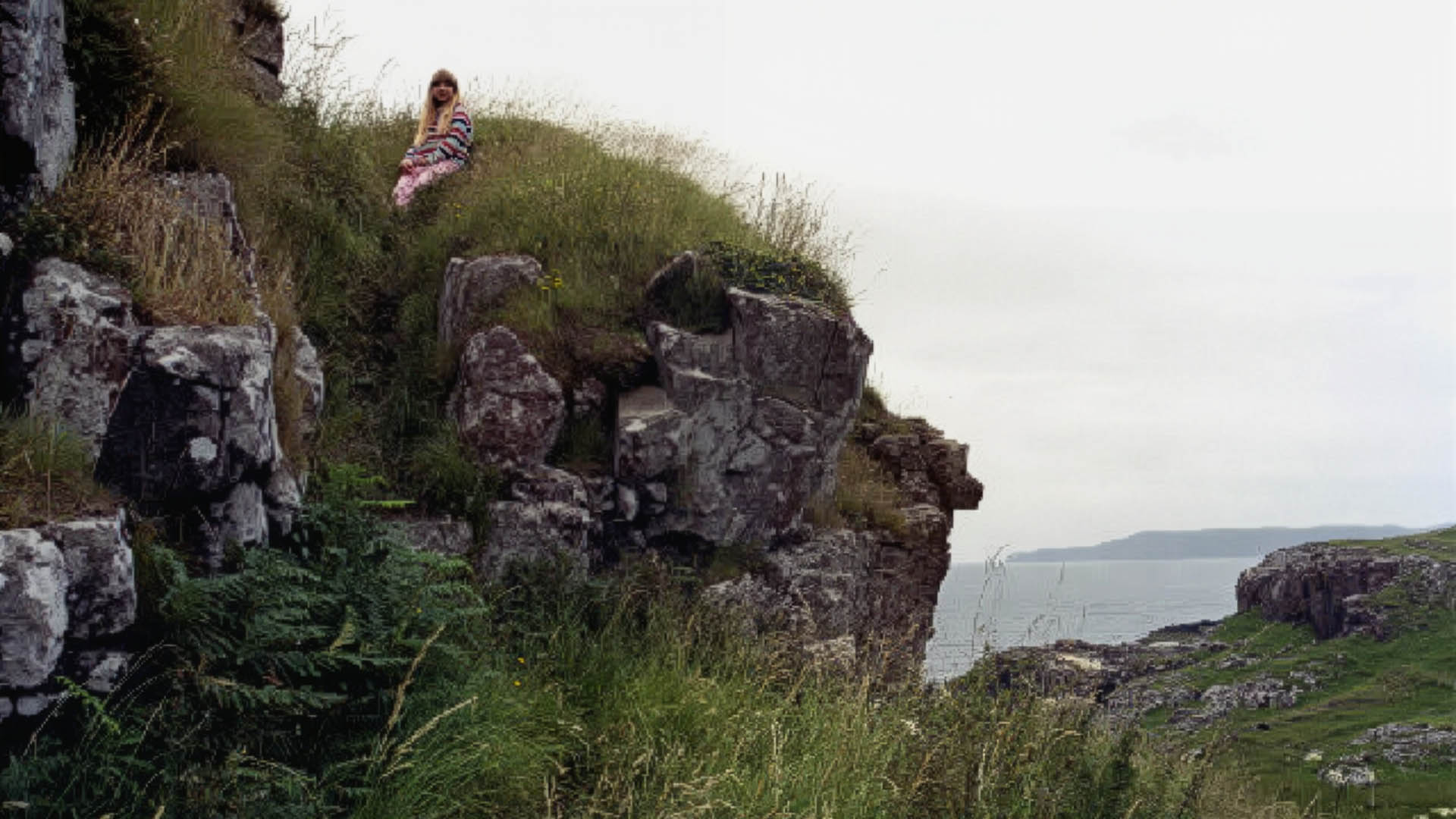
Within the castle’s interior, you can see the footings of several buildings. The most prominent was a large hall, measuring 12.3 meters east to west and 5.7 meters across. This “Great Hall” had two entrances. One led to an outer courtyard, the other to an inner courtyard. The hall was divided into two rooms. The smaller room may have served as a pantry, wine cellar, or secure storage. The absence of a fireplace suggests that heating came from a central peat hearth. The castle’s layout was cleverly segmented into an outer and inner courtyard. The inner courtyard was only accessible via a winding, narrow alley. This design funneled attackers and gave defenders a significant advantage in close combat.
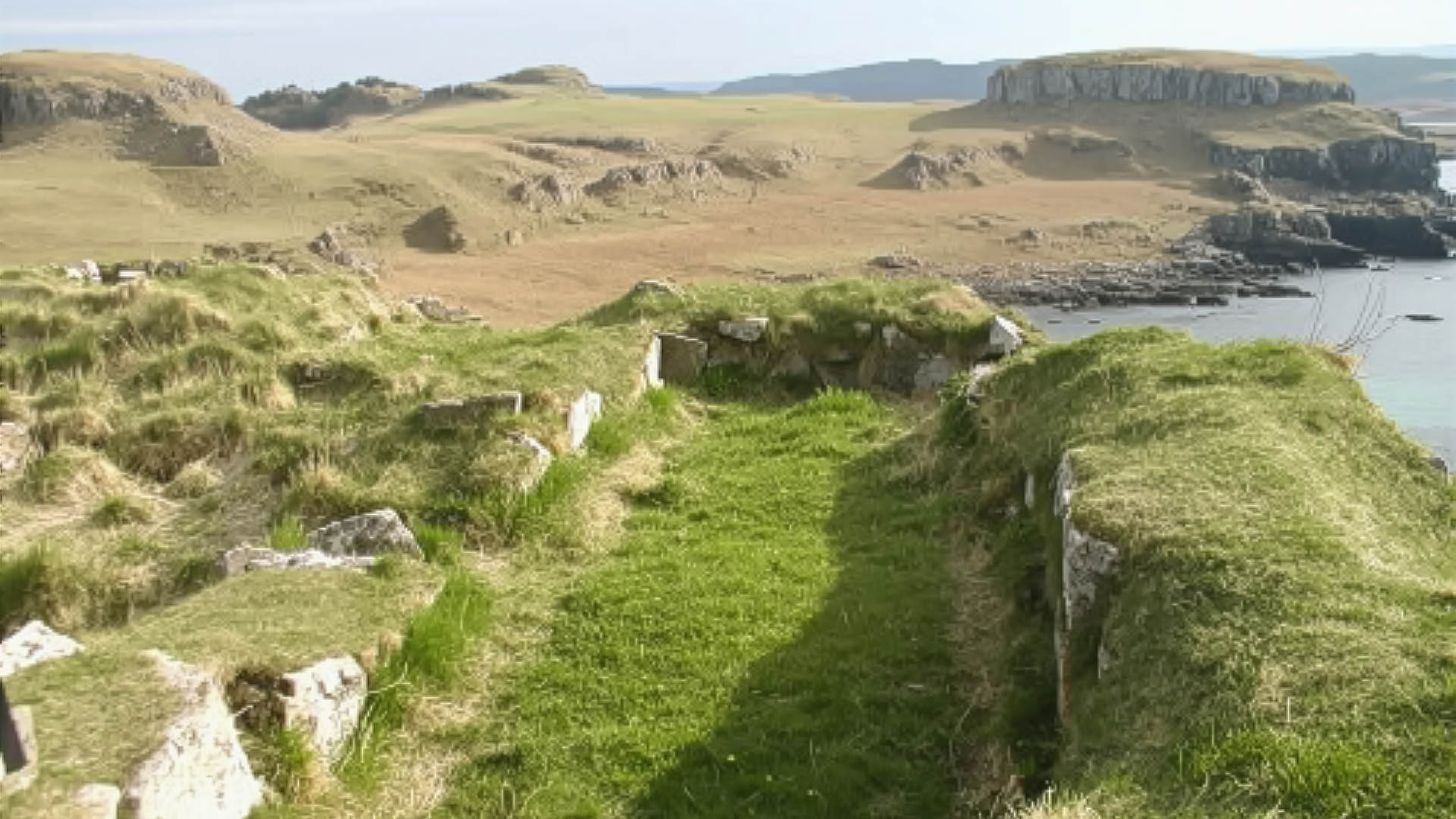
The Supporting Community and Maritime Connection
Beyond the castle walls, at the base of the rocky outcrop, lay a small community or township. It supported the stronghold. The turf-grown footings of six to eight sub-rectangular buildings are visible, but none stand higher than 0.1 meters. Associated cultivation strips and field clearance heaps indicate a self-sustaining settlement. This shows Dùn Ara’s role as a nucleus of a broader social and economic system, not just a military outpost.
Dùn Ara’s strategic importance was amplified by its direct connection to the sea. The castle’s location protected a harbour or boat landing, its primary means of access. An artificially constructed harbour complex is evident on the south-west side. It includes a jetty, quay, and two boat-noosts. While some masonry in the harbour may be more recent, its main features are believed to date back to the castle’s active occupation. This emphasis on maritime infrastructure suggests that controlling sea access was a central strategic function of Dùn Ara, perhaps even more critical than its land-based defenses. This reflects the inherent sea-based nature of power in the Hebrides.
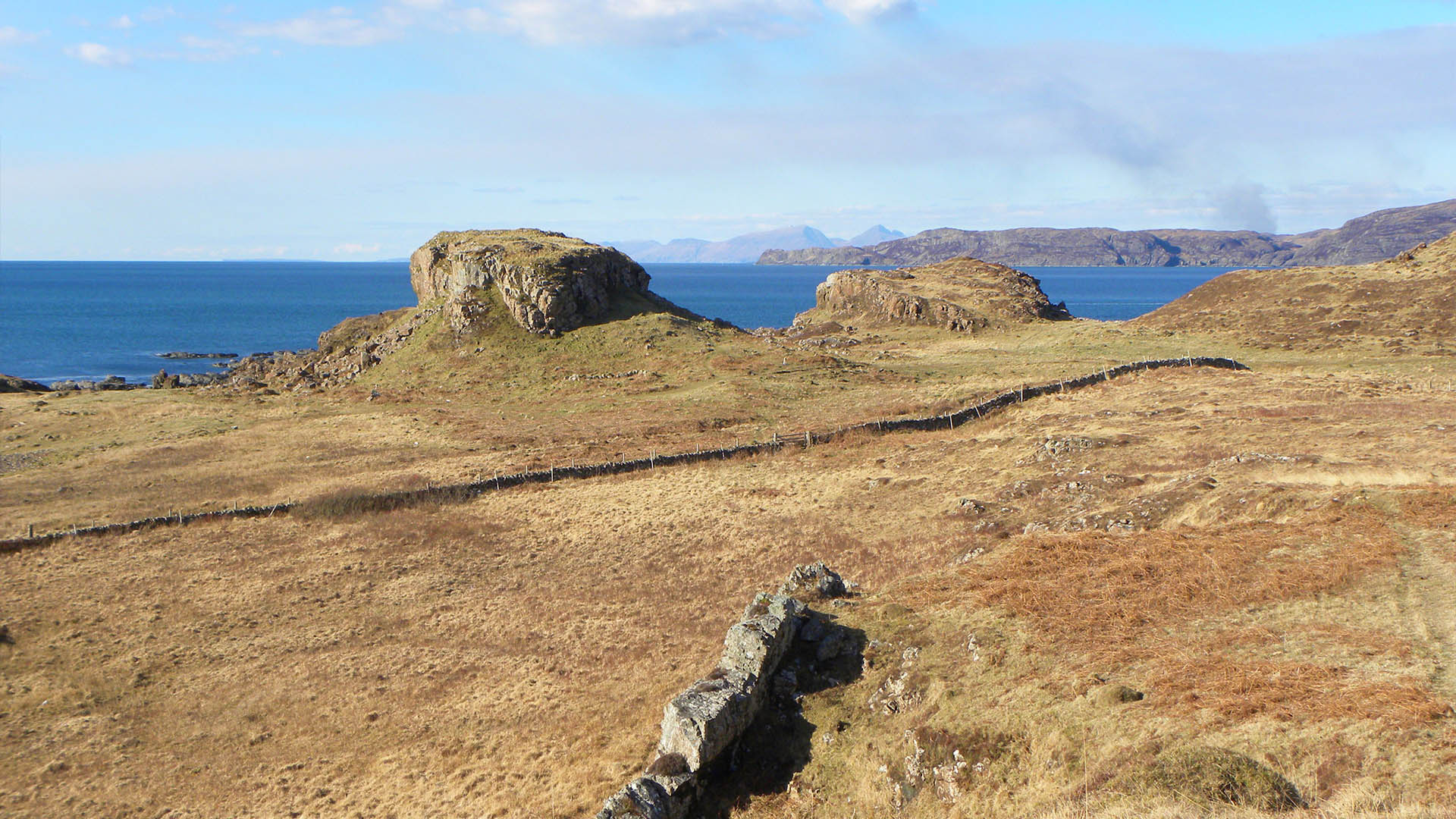
Enduring Legacy and Future Research
Dùn Ara, though a ruin, remains a powerful symbol of the Isle of Mull’s deep and complex history. Its unique position, evolving from an ancient dùn to a medieval castle, speaks to a remarkable continuity in recognizing its strategic defensive and maritime advantages. Its role as a vital stronghold for Clan MacKinnon, intertwined with the clan’s turbulent history and dramatic end, underscores its significance within the broader social and political landscape of the Scottish Highlands and Islands. The tantalizing, though unconfirmed, evidence of Norse influence adds another layer of fascination to its multi-period story.
The enduring legacy of Dùn Ara lies in what we know and what remains to be discovered. Future archaeological efforts at this site have immense potential to unlock its secrets. They could provide profound insights into early fortifications, clan dynamics, and maritime connections in Scotland. As researchers continue to piece together its fragmented past, Dùn Ara promises to yield a richer, more detailed understanding of the Isle of Mull’s vibrant and often tumultuous history and that of the broader Hebridean archipelago.

